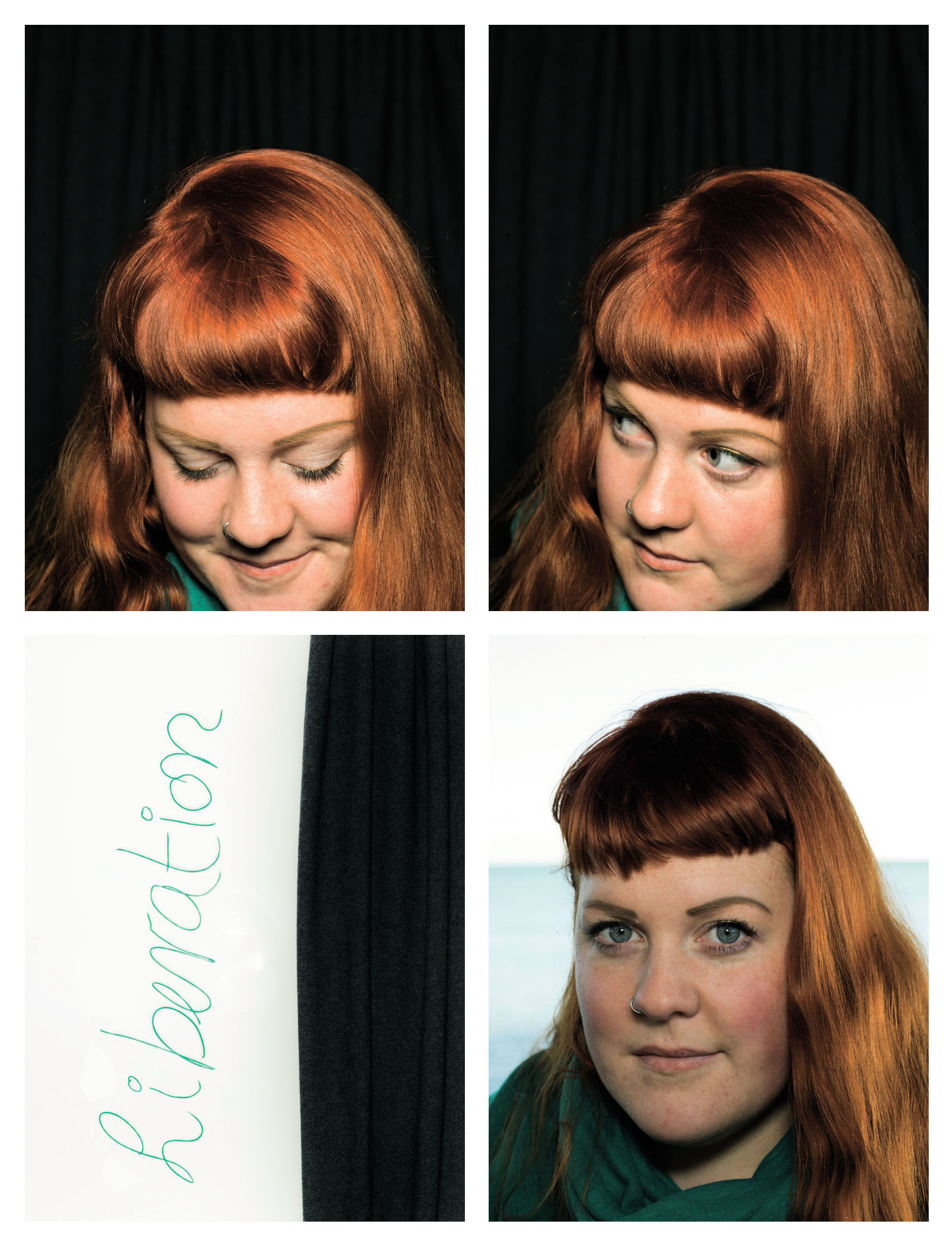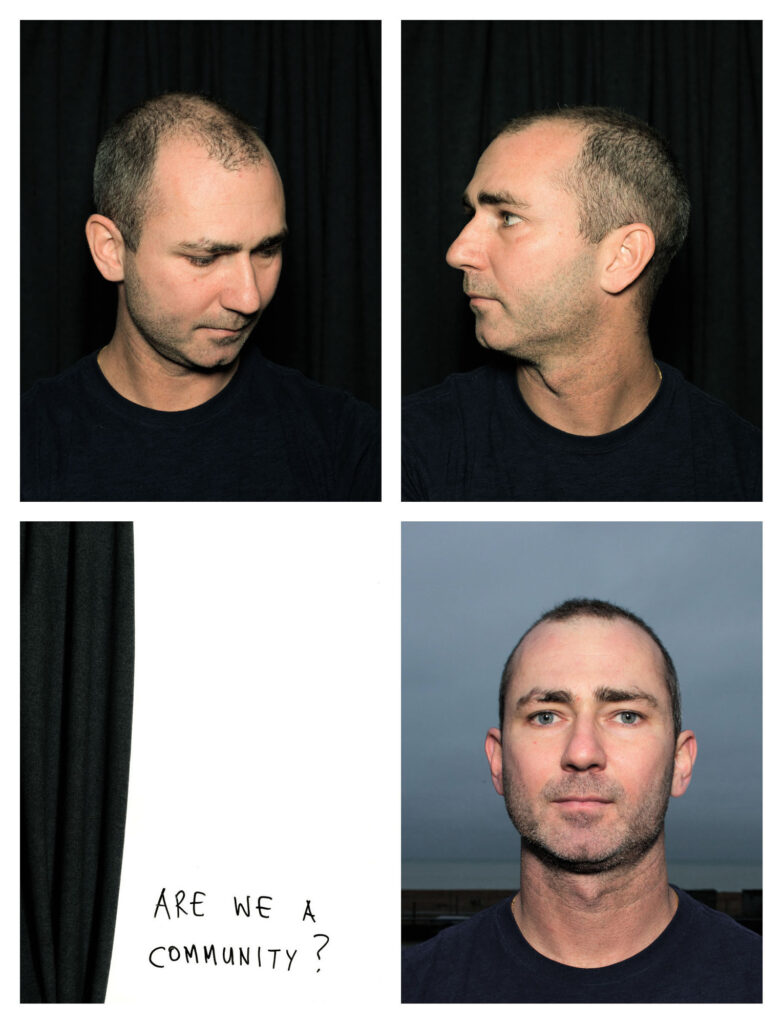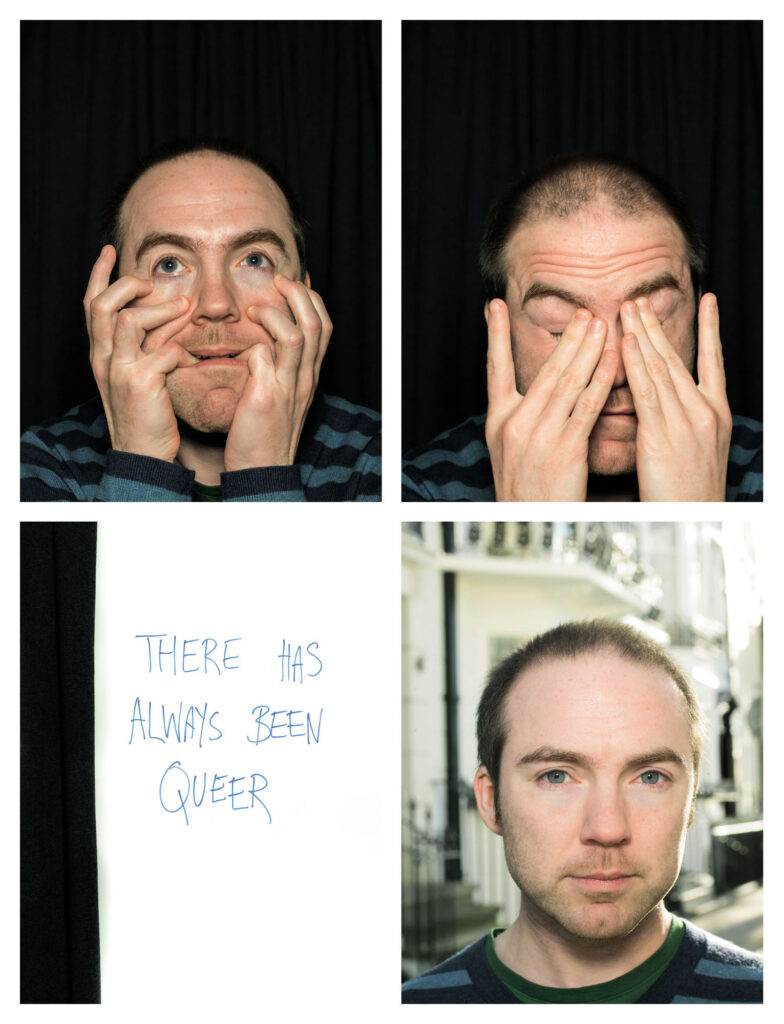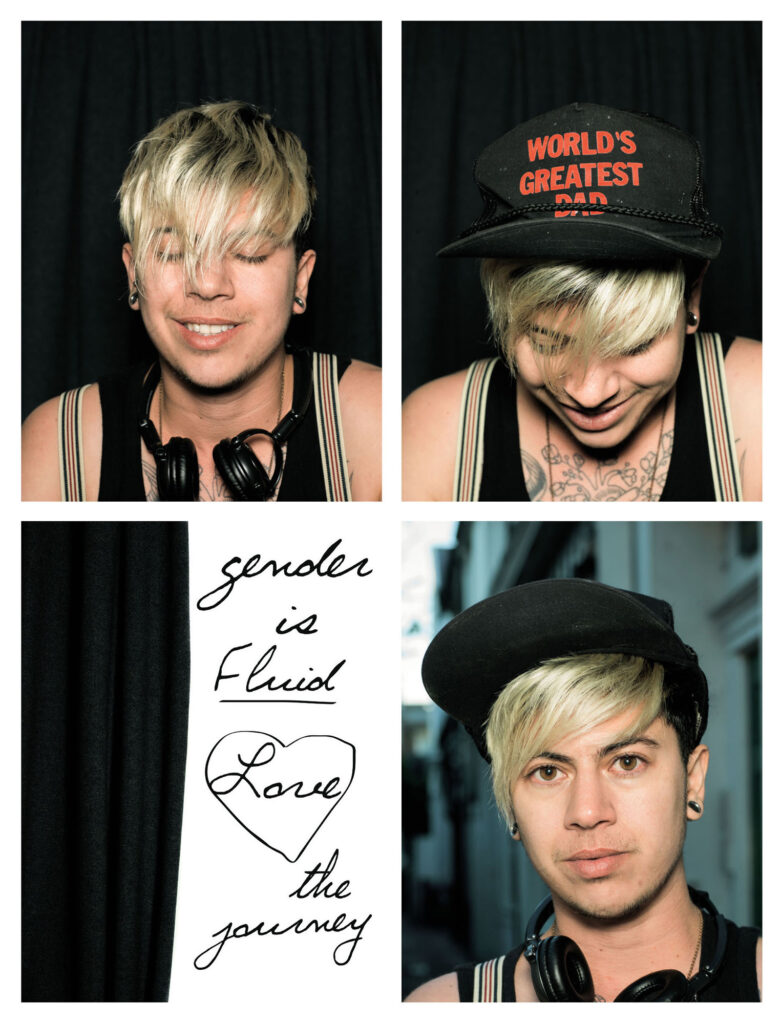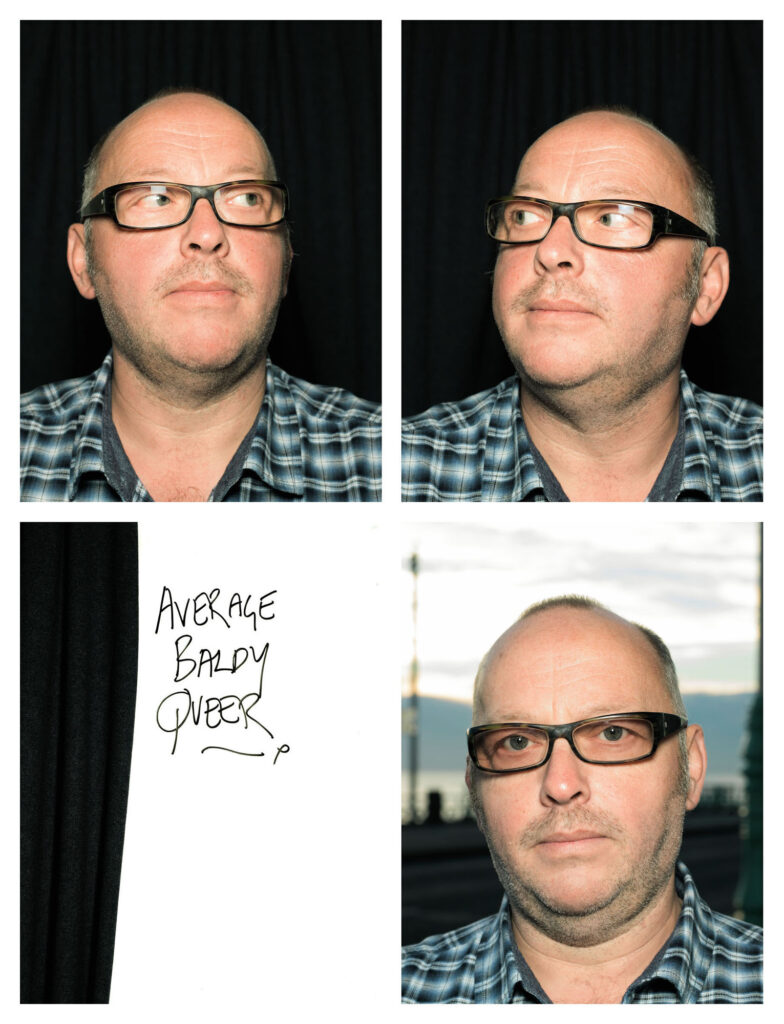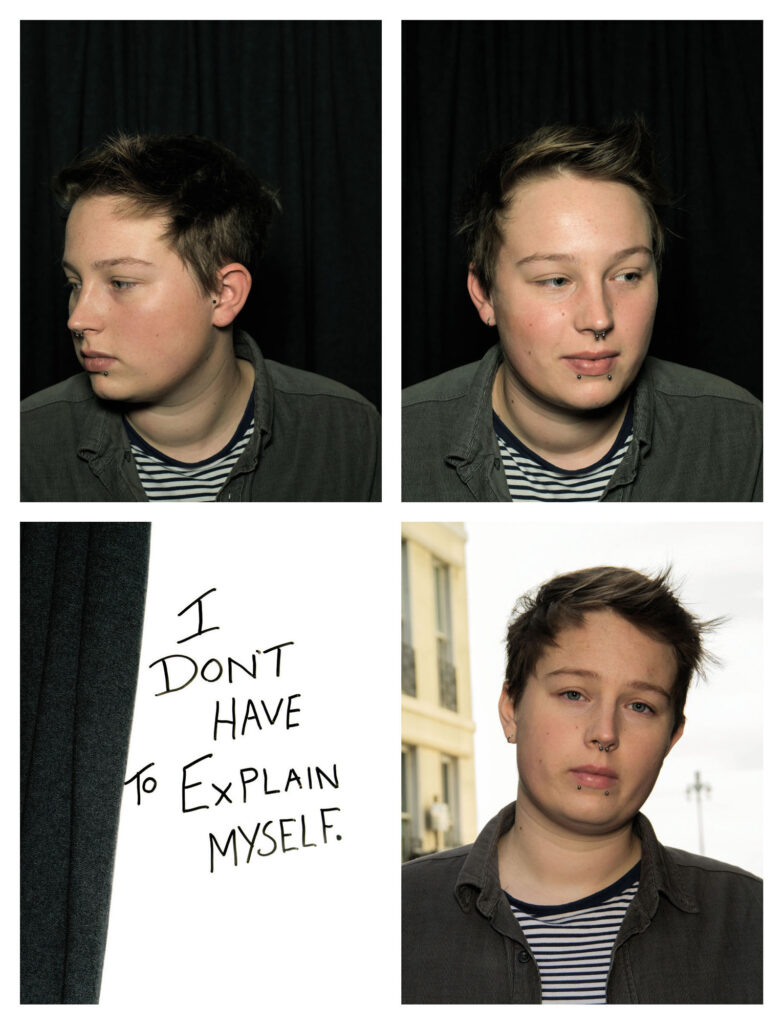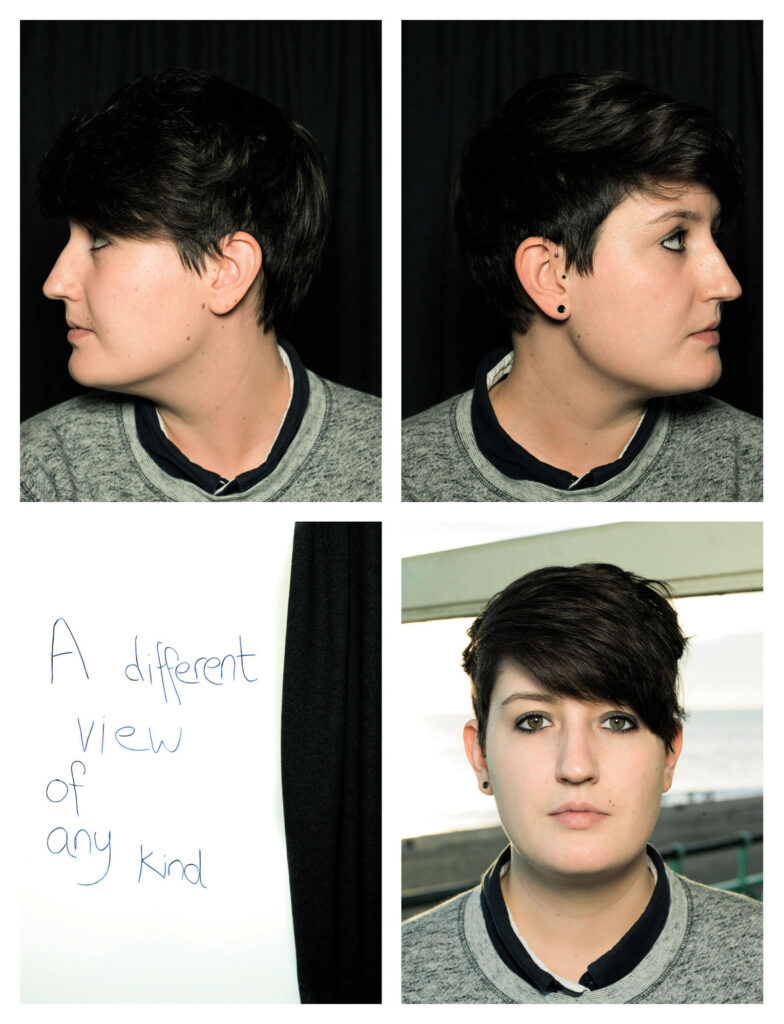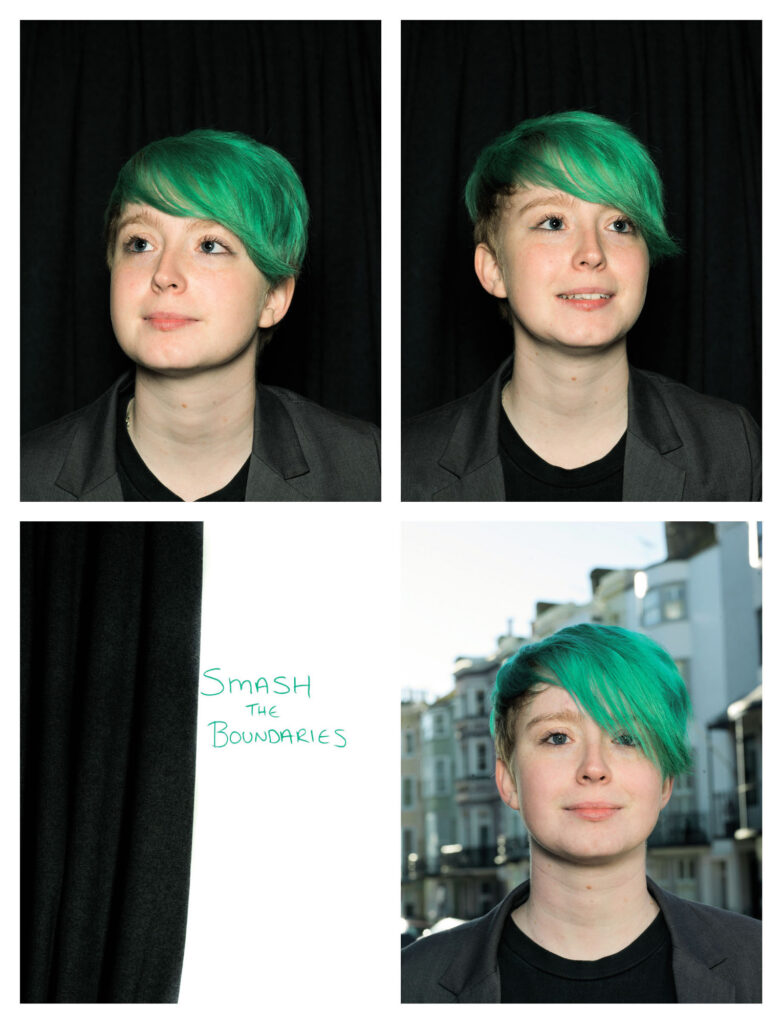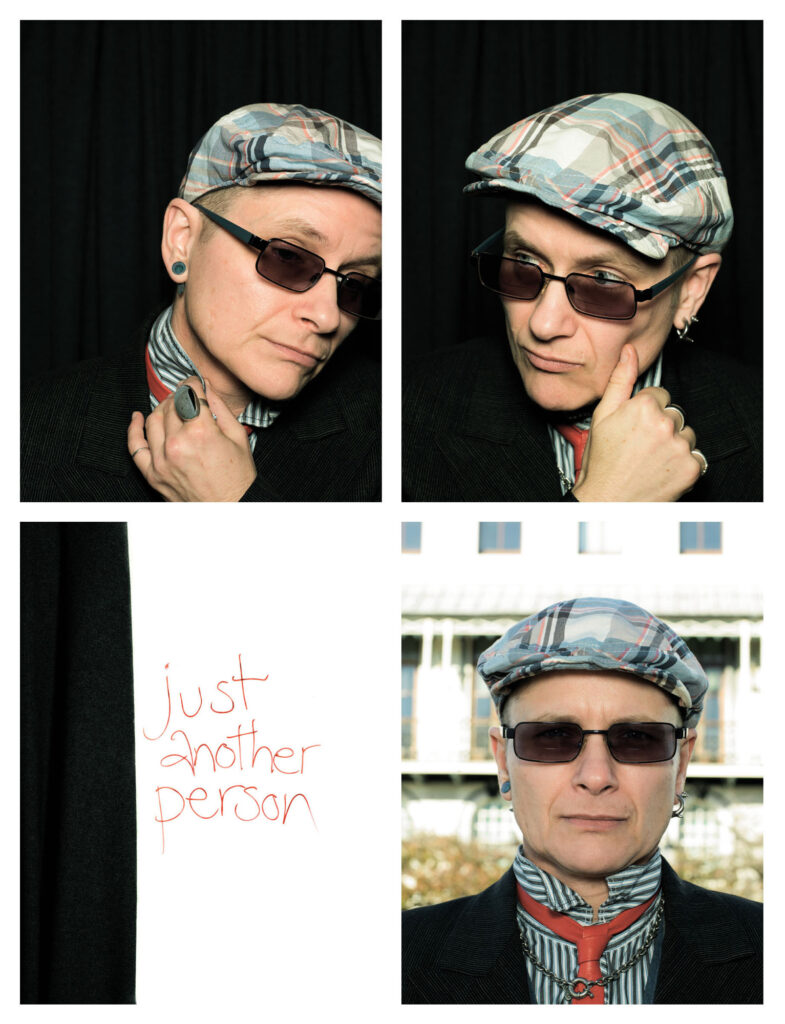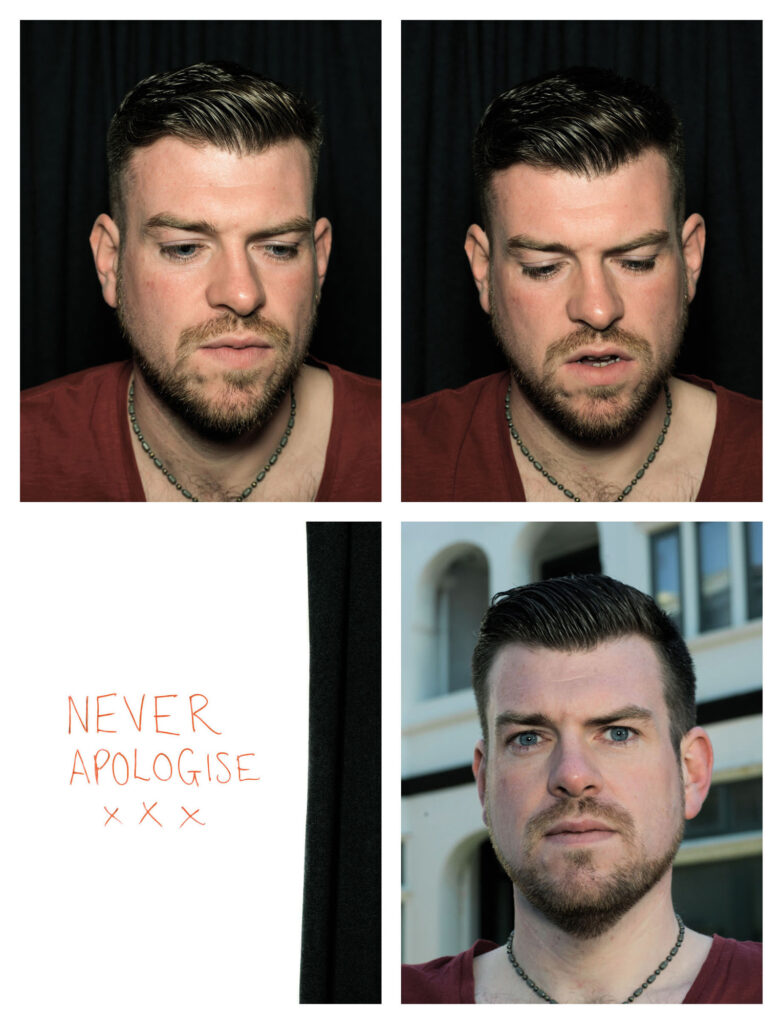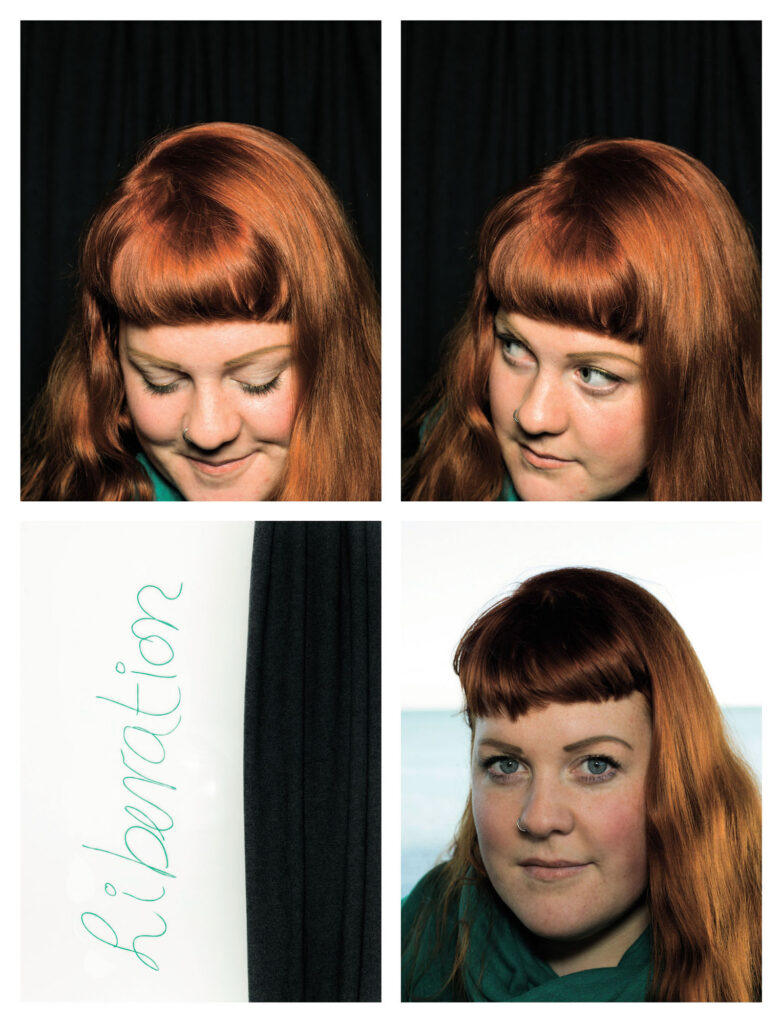In June 2013 I was invited to collaborate with lesbian, gay, bisexual and trans* people in Brighton to create work about being queer for Queer in Brighton. The invitation immediately captured my attention. While the first same sex weddings in March 2014 may be a great step forward for the rights of queer people in the UK, LGBT* individuals still remain largely invisible or misrepresented in the public sphere. The prospect of creating this work seemed to me to offer a useful way to further my inquiry into participation and self-representation with groups of marginalized individuals, and at the same time provide an opportunity to confront my own views of queerness as a gay man.
I asked eleven people who responded to an open call to meet with me and to bring along photographs that told ‘their story’. This enabled conversations to start flowing and for us all to get to know each other a little. We spent time unpicking ideas to do with ‘family’, ‘place’, ‘politics’, and ‘language’, and I coached participants in using their cameras. Everyone was encouraged to consider what being queer means to them, and to photograph their experiences and the things they are interested in.
Over the following months we met regularly to share photographs and discuss what was working well, what could be improved, and how this might be achieved. We visited Brighton Museum to consider how the social history of LGBT* people is represented in their collection. We created self-portraits in a photo booth on the North Laine. We explored sites for an outdoor exhibition and brainstormed titles. We talked about gay parents, queer theory, the politics of Pride, the asterisk in trans*, and everything else besides. Our conversations flowed easily and enthusiastically, spilling over onto private Facebook group discussions and the pages of our public blog.
Our regular visits to the photo booth became an important tool to sharpen discussions about photography and identity, and inspire planning to create collaborative portraits. The private and intimate space of this equipment, usually related to the production of images for official purposes of identification, seemed a particularly potent lens through which to look at ourselves. We took these ideas back to the workshop to create our own photo booth, queer it, and then explode out with a final portrait made on the streets of Brighton.
Images play a powerful role in the stories we tell about ourselves and the histories told about us. Not Going Shopping expresses the points of view of the participants and myself about what it is to be Queer in Brighton.
